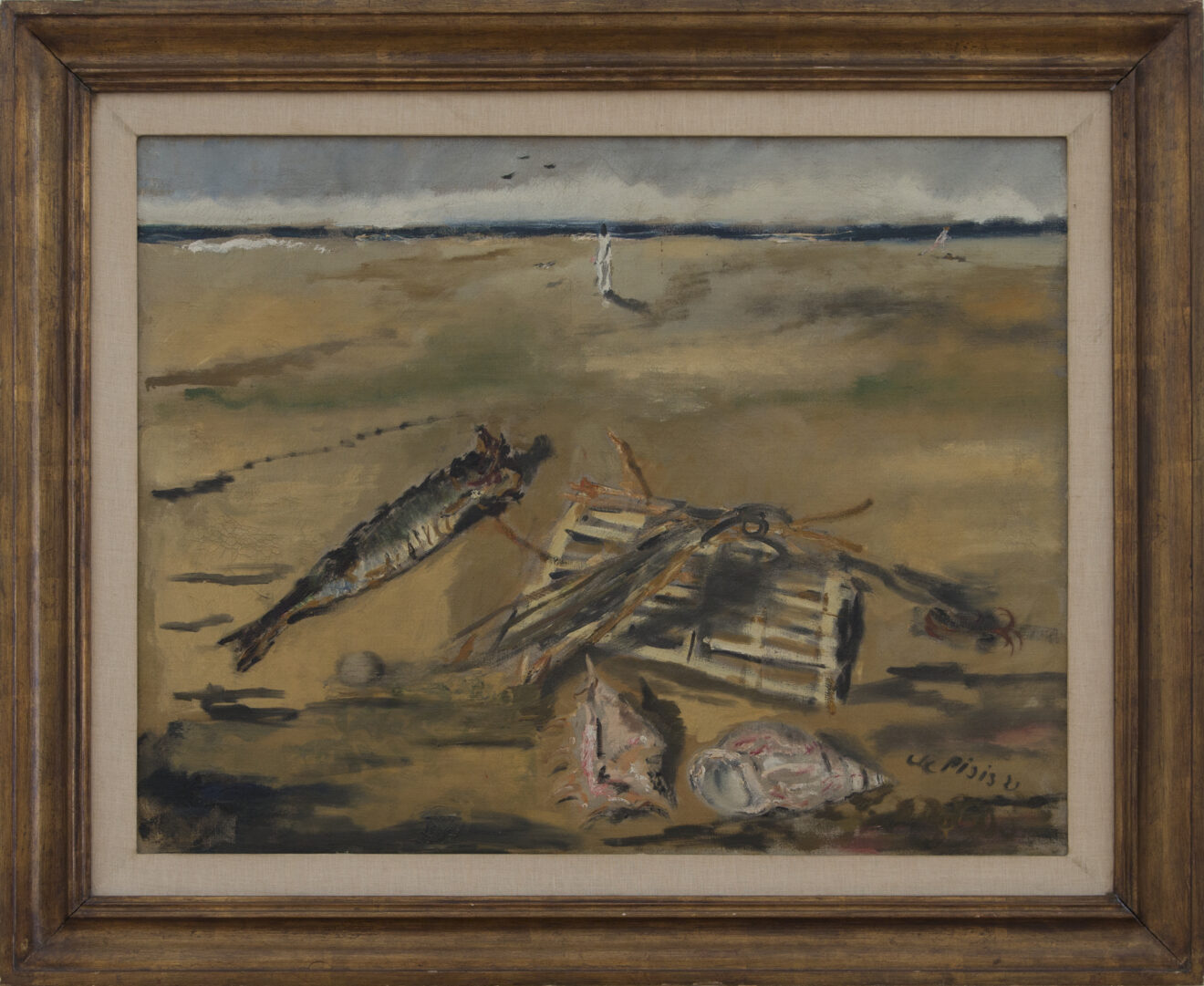Marina con natura morta, 1929

Filippo De Pisis (Ferrara 1896 – Milano 1956)
Marina con natura morta
oil on canvas
1929
cm 68,5 x 89
Ever since his youth, the creative and versatile talent of artist Luigi Filippo Tibertelli demonstrated an intellectual temperament and literary inclination. In 1916, he enrols in the Faculty of Literature at the University of Bologna, graduating in 1920 with a thesis on the Ferrarese Gothic painters. He began his career as a man of letters and art critic, collaborating with newspapers both local and beyond. From his initial texts, he reclaims the lost part of his historic surname, Filippo Tibertelli De Pisis, signing his works “Filippo De Pisis”.
His interest in and passion for painting drives him to flit between cities including Rome, Venice and Milan, Paris and London in pursuit of new cultural and artistic horizons.
From the start of his time in Rome, he begins to compose novellas and other texts, forebears of what would later be represented in his still lifes with landscapes. In 1920, he exhibits sketches and watercolours for the first time in Anton Giulio Bragaglia’s gallery in Via Condotti.
His painting style is influenced at first by interactions with Giorgio de Chirico, Alberto Savinio and Carlo Carrà, with whom he maintains a close correspondence over the years, beginning in Ferrara around 1915. He is fascinated by their conception of painting, so much so that he shares their metaphysical style in the first part of his oeuvre: one such example is his painting Marina con natura morta [“Marine Still Life”].
The shells, the salted fish and the tall figure at the water’s edge are common features in De Pisis’ still lifes, often set with the sea as a backdrop. They are rooted in the mirabilia [“wonders”] gathered by the artist in his youth, such as shells or wild herbs, and in the metaphysical painting of Carrà and De Chirico, from whom he reproduces subjects and spatial and temporal settings. Suspended in time, or rather trapped in the present — a present of decadence and solitude, of neglect, of impending putrefaction in which these participants are consumed and dissolved for eternity. These participants are reduced to apparitions. The passage of these apparitions recalls a painful existential sensation: the extremes of carpe diem and a melancholic awareness of destiny are recurring themes in De Pisis’ poetry, hungry and despairing.
His Parisian period, which began in March 1925, reflects his coming of age as an artist. It is here that he paints en plein air like the great vedutisti and meets Édouard Manet and Camille Corot, Henri Matisse and the Fauves. It is during this period that he creates some of his most famous canvases: in addition to the still lifes, recurring themes include urban landscapes and male nudes. He also draws inspiration from Manet and Renoir, adopting the intense palette of colours and luminous atmosphere of their works, while retaining the echoes of Venetian colourism.
Even though his works are primarily associated with Paris, he continues to participate in exhibitions in Italy, and begins to contribute articles for L’Italia Letteraria and other magazines. He becomes part of the circle of Italian artists in Paris, a group that includes Giorgio de Chirico, Alberto Savinio and Massimo Campigli, among others.
A stylistic change begins with a visit to London in 1935: his painting style becomes fragmented and quasi-syncopated, and his artistic output once more conveys his esoteric interests.
In 1939, after the time spent in London expanding his reach, he returns to Italy and settles in Milan, from where he moves between various Italian cities.
In 1943, he moves to Venice, where he finds himself inspired by the 18th-century Venetian masters.
After a brief sojourn to Paris in 1947-1948, he returns to Italy bearing the initial symptoms of a disease that would eventually kill him. The 25th Venice Biennale, the first of the post-war era, dedicates an entire room to him, featuring 30 works produced between 1926 and 1948.
The paintings of his last period, painted during his hospital recovery, draw inspiration from subjects he finds in the clinic’s greenhouse: this is the so-called “spiderweb” period, of blank and desolate canvases.
